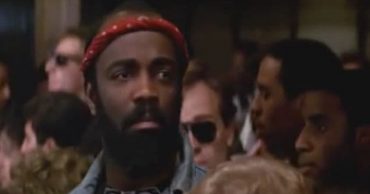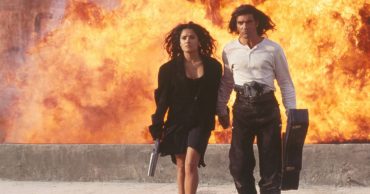Many filmmakers often resort to self-financing their own movies at the start of their careers as a means of getting their foot in the door of Hollywood. This allows them to bring their creative visions to life without the constraints of studio interference. However, it is not uncommon for established filmmakers to make self-financed movies even after achieving success in the industry.
By funding their own films, these directors can maintain greater creative control and autonomy over their work, avoiding the pressures of the producer system that can sometimes be stifling. This financial independence allows them to explore more experimental or personal projects that may not align with mainstream commercial interests, ensuring that their artistic vision remains uncompromised and authentic. So, here are 6 filmmakers who financed their own movies.
6. Jeremy Saulnier – Blue Ruin (2013)

Jeremy Saulnier appeared on the filmmaking scene with his 2007 movie, Murder Party. While the film didn’t achieve a widespread release, it did garner a cult following. From here, his next project gained critical acclaim and put him on the map as an emerging talent in Hollywood. However, his road to success wasn’t easy. Saulnier’s second movie, Blue Ruin, was self-financed and filmed around his home town over the course of a few years. The majority of the movie’s locations were shot at the properties and homes of his friends and families.
The taut thriller starred Saulnier’s childhood friend Macon Blair in the lead role, who was also unknown at the time of filming. This added a layer of authenticity to the film, as the two friends had been making home movies together since they were kids. Not looking like your typical hero, Saulnier capitalized on Blair’s innocent looks, and made a revenge movie that feels believable, with the lead character making ample mistakes on his pursuit to avenge the murder of his parents. The self-financed movie attracted the attention of many studios, with A24 eventually distributing the picture. From here, Saulnier was granted a bigger budget for his next movie, the contained thriller, Green Room. He then landed a deal with Netflix, with his fourth feature film Hold the Dark being released as a Netflix original. To that, Blue Ruin stands as one of the finest self-financed movies that led to great things for virtually everyone involved.
5. Peter Jackson – Bad Taste (1987)

The 1987 movie Bad Taste stands as a prime example of guerrilla filmmaking, showcasing the resourcefulness and passion of director Peter Jackson long before his monumental success with The Lord of the Rings franchise. Self-financed and independently produced, Jackson wrote, directed, and even served as the camera operator on the film, taking on multiple roles to bring his vision to life. This early project allowed Jackson to hone his craft, experiment with practical effects, and develop his distinctive style, laying the groundwork for the larger budget productions that would follow. Bad Taste remains a cult horror favorite, celebrated for its over-the-top gore, twisted plot, and dark humor, solidifying its place as one of the most iconic self-financed movies in cinema history. It serves as a testament to Jackson’s tenacity, creativity, and dedication to his craft, showcasing the power of guerrilla filmmaking in paving the way for future cinematic success.
4. Richard Linklater – Slacker (1990)

After his first movie, It’s Impossible to Learn to Plow by Reading Books, failed to achieve widespread distribution, Richard Linklater took a bold leap with his next project, Slacker. Writing, directing, producing, and even starring in the film, Linklater fully embraced the challenge of self-financing the movie. To make it happen, he borrowed money and secured cash advances from his credit cards, risking his financial stability for the sake of his art.
Fortunately, this gamble paid off immensely, as the $23,000-budgeted film went on to gross $1.2 million, marking a significant turning point in Linklater’s career. Slacker not only paved the way for larger successes on bigger projects for Linklater but also solidified its place as one of the most iconic self-financed movies in cinema history. A trailblazer in the teen comedy genre, Slacker remains a testament to Linklater’s perseverance, creativity, and willingness to take risks in pursuit of his filmmaking vision.
3. Kevin Smith – Clerks (1994)

Clerks is one of the biggest success stories of self-financed movies. The cult classic which was released in 1994, follows a day in the life of two convenience store clerks, Dante and Randal, as they navigate through a series of quirky and humorous encounters with customers, friends, and love interests. The film, written and directed by Kevin Smith, was a passion project for the filmmaker, who put forward the movie’s budget with his own savings and by maxing out his credit cards. Filming took place in real-life locations where Smith had worked, adding a genuine and authentic feel to the movie.
Despite its low budget and minimalistic approach, Clerks resonated with audiences and critics alike, eventually earning a worldwide gross of $4.4 million. This success not only validated Smith’s creative vision but also catapulted him to prominence in the film industry. Since then, Kevin Smith has enjoyed a successful career across various genres, with Clerks spawning two sequels and solidifying its place as a beloved cult classic in cinema history.
2. Francis Ford Coppola – Megalopolis (2024)

It may be hard to believe that one of the biggest and most celebrated filmmakers of all time would finance his own movie. However, Francis Ford Coppola makes our list of filmmakers who made self-financed movies with his upcoming film, Megalopolis. The movie takes place in a dystopian version of New York City following the aftermath of a devastating event. With the city in turmoil, an eccentric architect attempts to rebuild the city as a utopia. As of yet, further plot details have been kept tightly under wraps. However, it is shaping up to be a star-studded vehicle, with the likes of Dustin Hoffman, Adam Driver, Talia Shire, Laurence Fishburne, and Giancarlo Esposito boarding the project.
After the success of The Godfather, Francis Ford Coppola became one of the most sought-after filmmakers in the world. However, despite such pull, he has often made self-financed movies. His reason for this – to be completely free creatively and explore his experimental side. With that said, Megalopolis stands as his next self-financed movie, with the project reportedly costing him $120 million of his own money. The film is expected to hit movie theaters in September 2024.
1. George Lucas – The Empire Strikes Back (1980)

Star Wars: The Empire Strikes Back, the iconic second installment of the original Star Wars trilogy, is a classic movie that holds a special place in the hearts of fans worldwide. What many people may not realize is that the film was self-financed by filmmaker George Lucas. Initially, Lucas had planned the 1977 Star Wars film to be a standalone production, not anticipating its massive success. So, when it came time to work on the sequel, Lucas found himself in a unique predicament.
With all the rights to Star Wars in his possession and no studio willing to accept the deal he was offering, Lucas had no choice but to finance The Empire Strikes Back himself. This gamble ultimately paid off, as the film went on to become a critical and commercial success, earning approximately $401.5 million worldwide against a budget of $18 million. This movie further solidified the Star Wars franchise as a cultural phenomenon and showcased Lucas’s creative vision and determination in the face of adversity. Want to read more about George Lucas? Here’s why he doesn’t use the internet.
 Follow Us
Follow Us




